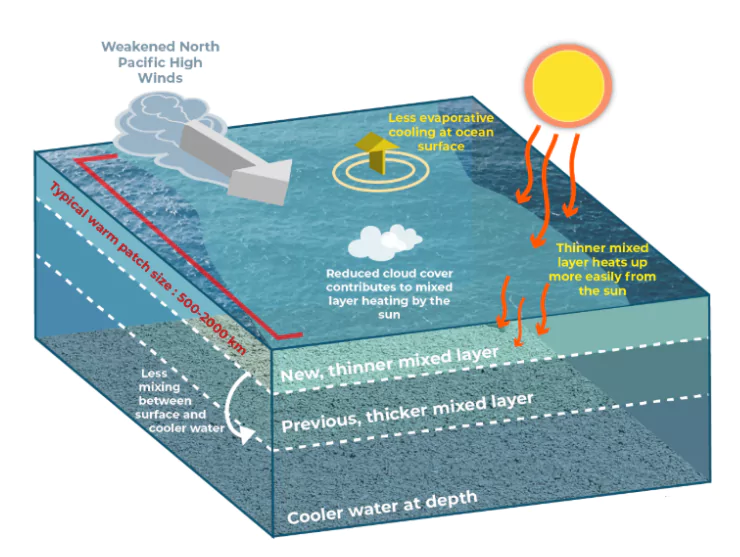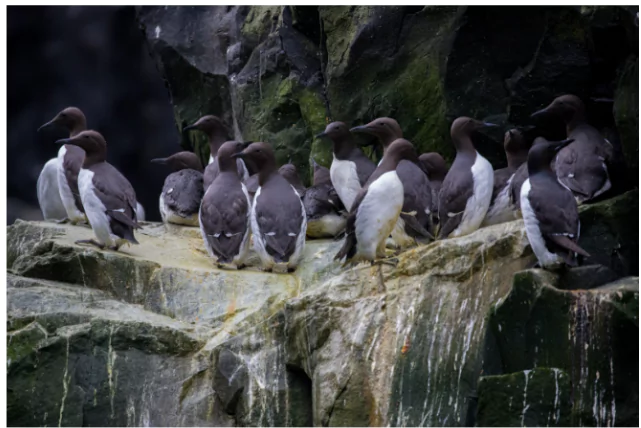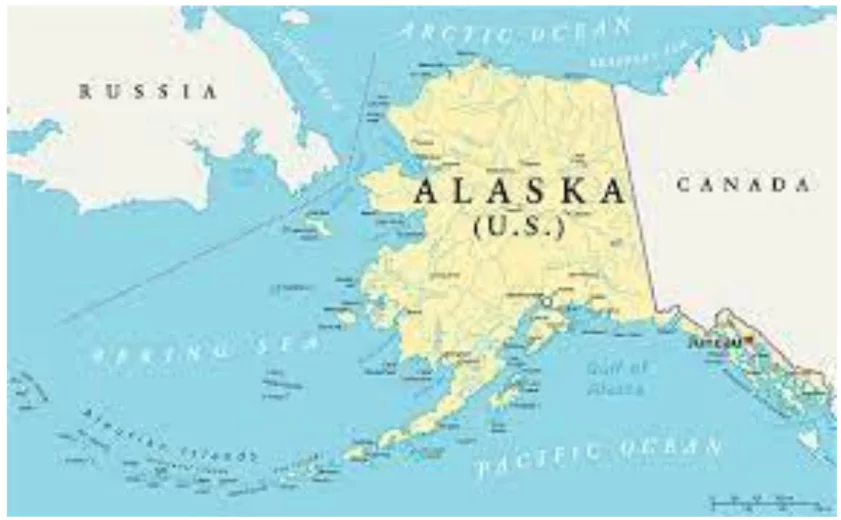A recent study published in the journal Science sheds light on the devastating impact of the 2014-2016 Pacific marine heatwave “the Blob” on Alaska’s common murre seabirds (Uria aalge),
Key Takeaways from the study
- Massive Die-Off:
-
- The marine heatwave (2014–2016) caused the death of over 4 million common murres (Uria aalge), wiping out more than half of Alaska’s population of these seabirds.
- It is the largest documented vertebrate die-off linked to warming oceans.
What Are Marine Heatwaves?
- Marine heatwaves (MHWs) are extended periods of unusually high Sea Surface Temperature (SST).
- Impacts on Marine Ecosystems:
- Lead to coral bleaching, destruction of seagrass, and loss of kelp forests.
- Negatively affect fisheries and marine biodiversity.
|
Enroll now for UPSC Online Course
- Population Decline:
- Researchers observed a 52-78% decline in common murre populations across 13 colonies from 2008-2022.
 This equates to the loss of 4 million birds in less than two years.
This equates to the loss of 4 million birds in less than two years.
- Causes of the Decline
- Impact of Rising Temperatures:
- Higher ocean temperatures disrupted marine ecosystems.
- A sudden reduction in the quality, quantity, and accessibility of forage fish led to mass starvation among the murres.
- Pre-Existing Stress:
- Some murre colonies showed signs of population decline before the heatwave, indicating additional stress factors.
- There were no signs of population recovery during (2016-2022).
- It shows that heatwaves likely caused a long-term ecosystem shift, reducing the ability to support seabird populations.
- Decline in Other Species
- Pacific Cod:
- Population dropped by 80% between 2013 and 2017, leading to fishery closures.
- Humpback Whales:
- After recovering from whaling, numbers dropped by 20% during the heatwave.
- Climate-induced food shortages now limit their population growth.
- Long-Term Effects
- A persistent drop in top predator populations like murres signals a major ecological shift due to global warming.
- Ecosystems may face reduced carrying capacity, permanently altering their structure.
Check Out UPSC CSE Books From PW Store
About Common murre

- Scientific name: Uria aalge.
- Common murres are black-and-white seabirds that resemble penguins.
- Nickname: Often called “flying penguins” because of their penguin-like appearance.
- They are the deepest diving birds in the Northern Hemisphere, capable of diving up to 600 feet to hunt for food.
- Conservation Status
-
- IUCN Status: Listed as Least Concern, indicating no immediate threat to their global population.
About Alaska

- Geographic Features
- Alaska is the largest state in the United States in terms of area.
- Capital: Juneau
- Borders:
- North: Arctic Ocean
- East: Canada
- South: Pacific Ocean
- West: Russia (across the Bering Strait)
- Historical Background
- Russian Origin:
- Alaska was originally part of Russia before being purchased by the United States in 1867.
- Largest lake: Lake Iliamna.
- Largest Glacier: Malaspina glacier
- Highest point: Denali (Mount McKinley).
|
![]() 31 Dec 2024
31 Dec 2024

 This equates to the loss of 4 million birds in less than two years.
This equates to the loss of 4 million birds in less than two years.